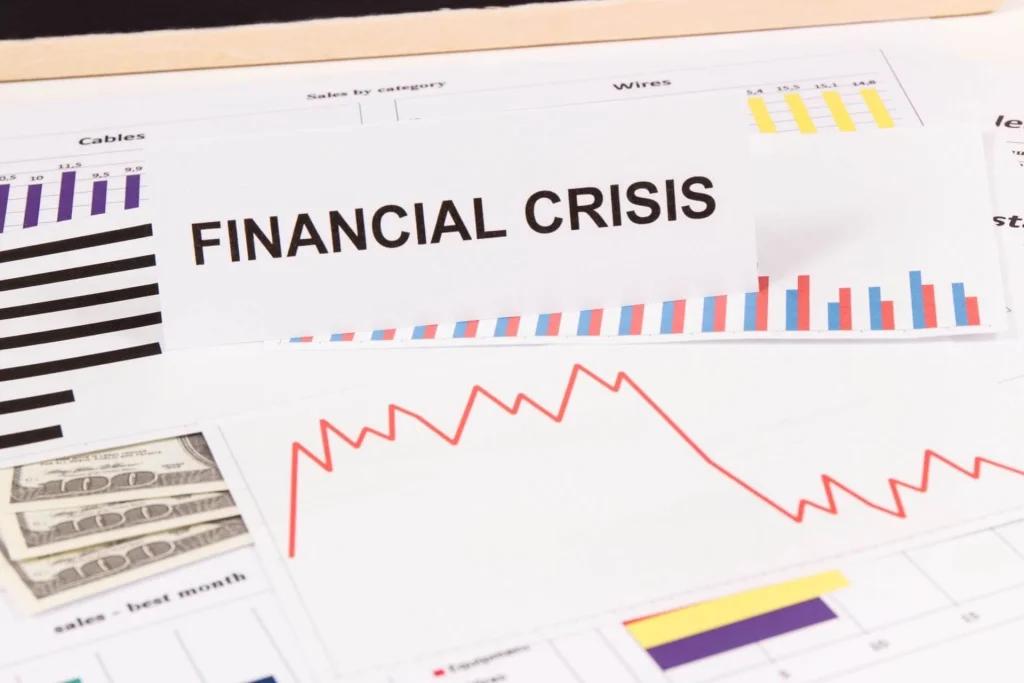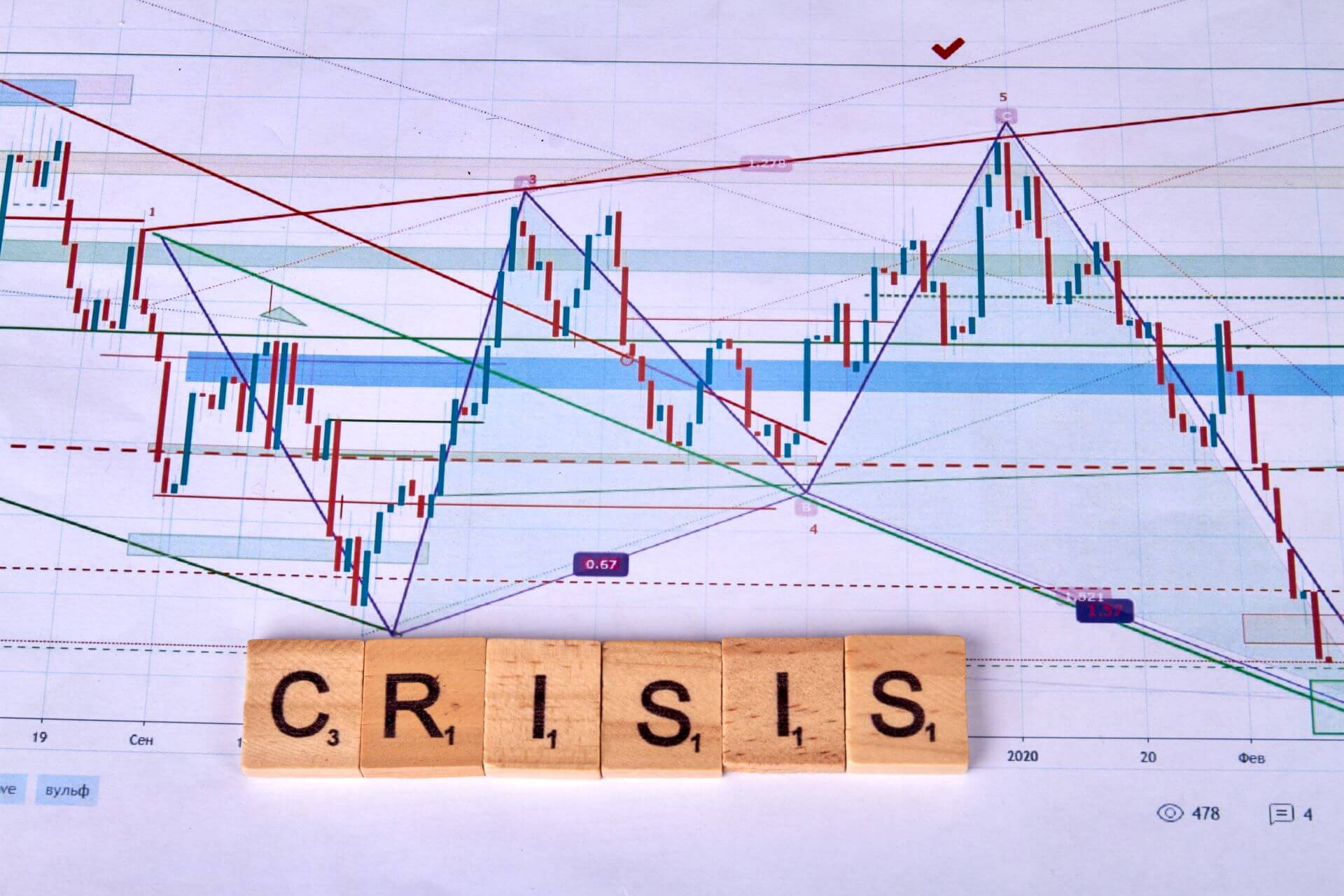Banking crises are specific kinds of financial crises centered around banks. Following how financial crises tend to affect other participants in the economy, like other banks, companies, depositors, and the like, banking crises can worsen to the extent that even bigger names like the US federal reserve, Silicon Valley Bank, JPMorgan Chase, and many banks, including your signature bank, can be negatively impacted. This can include even you and your houses in the Philippines.
Given this, this blog aims to discuss general information on financial crises, banking crises, and relevant banking crises to give you background knowledge that can better enable you to understand or assess financial crises that impact you more directly, like the effects of financial crises and bank failure in PH.
What Is a Financial Crisis?
A financial crisis refers to an instance wherein numerous individuals, organizations, and governments are put into a position where they cannot fulfill their financial obligations because of a detrimental decline in the value of virtually all assets.
Examples of financial crises include financial institutions significantly tightening loaning requirements combined with being limited to the loan only up to a certain amount, the stock market crashing, governments being cannot pay their debt or debts, and trends of increasing asset prices abruptly falling.
Financial crises can take place in just several related financial organizations or services, or even a country, but their occurrence typically follows a trend of spreading as far as becoming a global crisis. When it occurs, the assets of investors drop in value, leading to riskier investment options, and financial institutions experience liquidity shortages, which means they are less capable of providing funds to clients.
What Causes Financial Crises?
Financial crises are large-scale issues that occur from a domino effect of poor decisions and poor circumstances compounding on top of each other. Particularly, it can be caused by a series of irrational decisions by investors that follow popular notions that are ill-informed. For example, if a rumor spreads that bank failures will occur, this may cause investors to sell their assets at lower prices or make large withdrawals from their savings accounts.
Apart from non-bank activities like human behavior, factors that cause financial crises include assets being overvalued and failures in systems in the economy that end up undermining the capacity of institutions, businesses, consumers, and investors to pay debts or fulfill their function to contribute to the economy.
If we are to identify the steps in which financial crises happen, they typically first occur with the failure of financial systems because of failing regulations or economic systems, followed by the breaking down of financial systems due to institutions and businesses being unable to fulfill financial obligations. This eventually leads to a rapid decrease in the worth of assets, which can negatively affect your houses in the Philippines.
What Is a Banking Crisis?
A banking crisis is what happens when a bank undergoes a financial crisis, thereby referring to the instance where a bank cannot fulfill its financial obligations. These take the form of credit risk, which is a loss sustained by a bank because of depositors not being able to pay back loans (also known as loan losses or bad loans), and interest rate risk, which is the increase of interest rates that lead to the worth of bonds significantly decreasing.
Furthermore, there are defined cases that can occur when a banking crisis occurs. One of the two cases is called bank insolvency, which refers to a bank’s assets becoming too low in value to the extent that negotiated terms with lenders are unlikely to be met.]
The other case is bank illiquidity, wherein a bank does not have the liquidity or available cash to be able to meet the demand of the institutions, businesses, consumers, and investors that seek the services of the bank.

What Is a Systemic Banking Crisis?
A systemic banking crisis is when banking failures or crises occur in numerous banks in a country, rendering many banks insolvent, illiquid, and unable to provide adequate services for the economy.
This occurrence causes defaults, which refers to the failure of paying debts, to numerous corporations, institutions, businesses, and the like.
When a systemic banking crisis happens, the economy of a country is significantly affected by causing rapid increases in real estate rates and expenses that can affect your houses in the Philippines, the decline of asset prices, and an increased likelihood of an economic recession.
As a result, this simultaneous failing of banks can cause the banking system of a country to collapse, leading to a detrimental of banks not being able to provide access to deposits for institutions, investors, and consumers, along with possessing many liabilities.
This development of bank failures, which likely affect even the largest bank in the nation or your signature bank, causes a nation’s banking capital to be depleted. And when banks fail and lack the money to perform the necessary services, to handle deposits, loans, and funds for depositors, as well as mitigate risks, the worth of assets and equity of corporations plummet.
These negative outcomes, especially when produced as a result of the largest bank failures, can then infect related countries, causing what is called a global financial crisis.
Discussing the Present Global Situation
Briefly summarizing, an event caught the attention of the world last March 2023 when Switzerland’s largest banked, UBS, opted to purchase Credit Suisse, which is the second largest bank in that nation in order to avoid what could potentially trigger wide-scale bank failures.
This move by the UBS bank was due to Credit Suisse losing the confidence of investors, causing the bank to face issues of being illiquid.
On the Western side, the Silicon Valley Bank (SVB) suffered becoming the second largest bank failure in the US on the same month that UBS opted to purchase Credit Suisse. The SVB collapse occurred due to depositors simultaneously withdrawing their deposits from the bank due to a collective belief that the bank will fail in the future, which is an instance called a “bank run.”
Given this present global situation, many central banks are strategizing how to ensure that the global economy keeps the flow of cash consistent so that a global crisis does not happen.
Notable Records of Banking Crises
Credit Crisis of 1772
This crisis was caused when an individual who was a partner in one of the largest banks at the time named Alexander Fordyce, escaped to France in order to avoid repaying shorting share losses of the East India Company. This would kickstart events that would deplete banking capital to the extent of causing 20 large banks to fail and eventually leading to the American Revolution.
Stock Crash of 1929
In 1929, share prices in the stock market site crashed due to hard-like behavior from depositors and investors guided by speculations. This would later cause what would be called the Great Depression, where banks, companies, and the risk of failure for a business was high.
The 2008 global financial crisis
This crisis is deemed to be the worst one since the Stock Crash of 1929 and started with excessive issuance of sub-prime mortgages, which refer to issuing mortgages to borrowers with low credit scores (which are caused due to being inconsistent in paying loans on time). This fostered bad debt for almost every bank involved, increasing the risk of defaults on many bank accounts by customers, causing the worth of money to drop, capital to deplete, and numerous businesses to fail.
Read more: How the DBP and Landbank of the Philippines Possible Merging Affects the Economy and Loans


